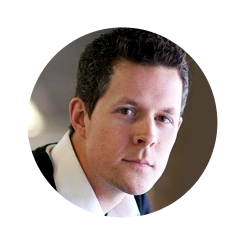
In many ways, Elizabeth Warren’s 2005 bestseller All Your Worth was ahead of its time. Warren, a relentless consumer advocate, eschews mindless frugality and focuses instead on finding the right balance so you always have enough to pay your bills, have some fun, and save for the future.
The author suggests a simple formula for spending your after-tax dollars on needs, wants, and savings:
- Allocate 50 per cent to needs: These must-haves include housing, transportation, groceries, insurance, and clothes that you really need.
- Spend 30 per cent on wants: Wants include cable television, clothing beyond the basics, restaurant meals, concert tickets, hobbies, etc.
- Set aside 20 per cent for savings: This includes both short- and-long term savings, as well as debt repayment.
Warren encourages saving AND having fun rather than scrimping and pinching pennies on the things that make you happy. That means saving money on big-ticket items like housing and transportation – effectively reducing the amount you spend on needs to free up money to save for the future and spend on wants.
“If you can’t afford to have fun, you can’t afford your life.”
When I applied this formula to my own spending I found the following breakdown:
Needs took up 53.5 per cent of our monthly budget, including the mortgage payment, property taxes, car payment, insurance (life, home, car), groceries, gas, utilities, cell phone, hair cuts, prescriptions, and clothing.
Related: What will it take for you to save more this year?
Wants made up just 18 per cent of our monthly spending, including cable and internet, restaurants, alcohol, children’s activities, hired cleaners (bi-weekly), credit card annual fees, subscriptions and memberships, gifts, summer vacation, and discretionary spending.
Finally, savings accounted for 28.5 per cent of our monthly budget. This amount includes repayment to our line of credit, contributions to my employer pension, RESP deposits, plus RRSP contributions.
Our car will be paid off late next year, which will free up $10,000 per year and reduce our “needs” allocation from 53.5 per cent down to about 44 per cent. Ideally, I’d prefer to shuffle that money over to savings and build up our TFSAs; however, I’ll keep the idea of balance in mind and consider adding a few thousand dollars into our “wants” allocation.
Final thoughts
A balanced financial plan will ultimately lead to a happier and more fulfilling life.
Too many of us are living close to the edge financially because they’ve over-extended themselves on house and car payments and can’t afford to live.
Related: The Diderot Effect – The curse of upgrading your lifestyle
It’s easy to find your balance. Start with not buying the biggest house you can afford, living closer to where you work, driving your car longer, shopping around for a better mortgage rate, and avoiding money traps like mortgage life insurance, credit protection insurance, and extended warranties.
Being house-and-car poor means having to skip out on indulgences and pleasures that make life more enjoyable, or going further into debt while blindly spending money that isn’t there to begin with.
In addition to running the Boomer & Echo website, Robb Engen is a fee-only financial planner. This article originally ran on his site and is republished here with his permission.

